Controlled Airspace Access
Gliding Australia is participating with other ASAOs and CASA on the proposals for changes to controlled airspace. From the CASA documentation:
“Currently, pilots operating sport and recreation aircraft are generally not permitted, unless they hold a Part 61 licence and valid flight review, to operate at a controlled aerodrome or in controlled airspace. Sailplane pilots have had a longstanding ability to fly in controlled airspace subject to completing particular Glider Federation of Australia (GFA) training. For other sport and recreation pilots, exemptions have been in place for several years to allow limited operations, such as sport and recreation flying training, to be conducted at some controlled aerodromes and their associated controlled airspace.
Concerns have been raised around the limitation preventing sport and recreation aircraft from operating at controlled aerodromes and in controlled airspace, particularly in light of potential reclassification of some airspace (at and around Ballina aerodrome) that is currently accessible to sport and recreation aircraft.”
This is about fair and equitable access to airspace. As mentioned, gliding in Australia has a long and successful history of access. Our intention is to represent gliding as the model that other ASAOs need strive for.
CASA has a recent webinar online: Controlled aerodromes and operations – Avoiding airspace infringements. It is available in the CASA YouTube Channel. https://tinyurl.com/4vknh6u7
Your part in this process is to continue the professional manner shown by glider pilots when flying in or near controlled airspace. Stay tuned for more information.
Part 149 – Operations Documents and Forms Changing
The rewrite of MOSPs and other documents that made up our exposition to CASA means there are many documents that need updating. Gliding Australia is working through these documents and forms. When a document is changed in Operations, the EMO will alert membership on the Gliding Australia forum and send an email to members. The old document or forms will be retired and the new placed online.
Change management is normal part of life for gliding going forward. Each of the documents have Change Management request form at the front of the document. Any member can suggest a change. The process is explained in: ADMIN0028 Management of Change Manual
As an aside, Gliding Australia is seeking ideas on systems and methodologies for document change management. Some documents are lengthy and trolling through a document looking for a change is not helpful for all of us. Please remember that pricing is a consideration, we do not have a lot of money to spend on a solution. If you have experience or ideas, please email:
Operations Training Manual Now Online
There is a new manual released in Operations. It is a shared document between Soaring Development and Operations. This is the first of a number of shared documents you will see in the future. The Training Manual describes the training for Glider Pilot Certificate, Basic Aerobatics, Advanced Aerobatics, Ridge Soaring, Wave Soaring, Instructor training, Silver Coach training and low-level finish training. It is the go-to document that will either contain the training sequences or will provide a pointer to another training manual that is specially built for the purpose. Examples of these are the Aero Towing manual and Winch manual. In the future all manuals will be updated and reviewed as well as new manuals produced.
Straight in Approach Training
The June 2024 joint department panel meetings uncovered a training opportunity that is important for all pilots flying in competitions and regattas. We do have training for Low level Finishes. Nowadays in regattas and competitions the finish points are usually away from the airfield. Straight in approaches may be set as the preferred method. We do not have a GPC unit on this topic, and it is not required for a GPC. Soaring Development and Operations are working together to produce a training module and credential for this. We are aiming to have the module ready in time for training to be available before the soaring season starts.
Why are Credentials in JustGo Important?
Members often ask why Gliding Australia needs our medical, radio and other endorsements to be recorded on JustGo. It is a fair question. After all, your logbook is the official record of your endorsements.
As part of our ASAO responsibilities, Gliding Australia is required to keep records of medicals and credentials and we get audited by CASA. What if you lose your logbook? We cannot keep track of all your flights, but we do have records of your Flight Reviews including the hours you have flown and we can help you rebuild your logbook. Also if there is an accident and you are unable to provide your logbook or other documents to insurers, we can draw on our records. Please help us to help you by providing your medical and endorsement documentation.
Refresher Packages
Andy Aveling, a visiting pilot from the UK, shared the details of a ‘Refresher Package’ that the Lasham Gliding Club offers to its members at the start of each season with me.
Lasham bundle together two winch launches, the first a simulated failure procedure, the second an aerotow to 4000ft for spinning and other handling exercises. They also include 30 minutes in a motor glider for paddock landing and simulated launch failure practice.
Priced by the club at break even rates, the package of three flights is at a considerable discount to the normal cost of each element. More than 85% of eligible pilots take up the package each year.
What a great idea this is. A similar package could be tailored for your site. You may be able to buddy up with another gliding club that has facilities like a winch, tow planes or motor glider that you do not have access to. The usual Flight Review requirements could be included as well. The result would be that pilots are refreshed and ready for the soaring season ahead.
SOAR report data over time
I have been doing some research on SOAR reports since data collection started in 2011. The results are interesting.
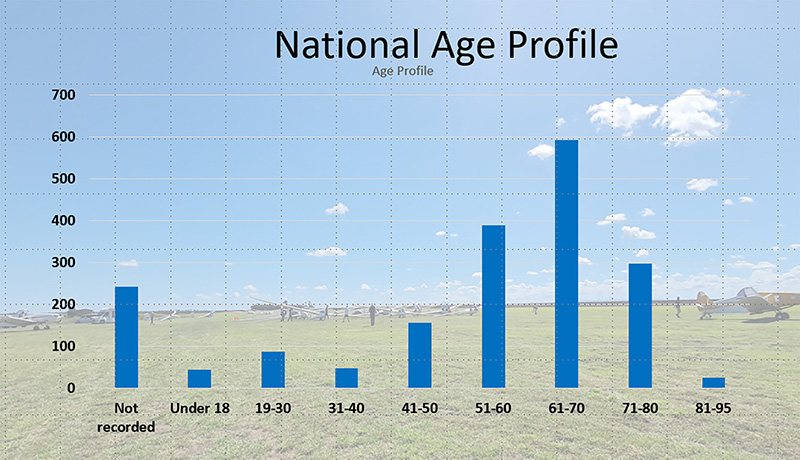
VERTICAL AXIS - NUMBER OF SOAR REPORTS
Above is the age of the pilots involved in an incident or accident reported.
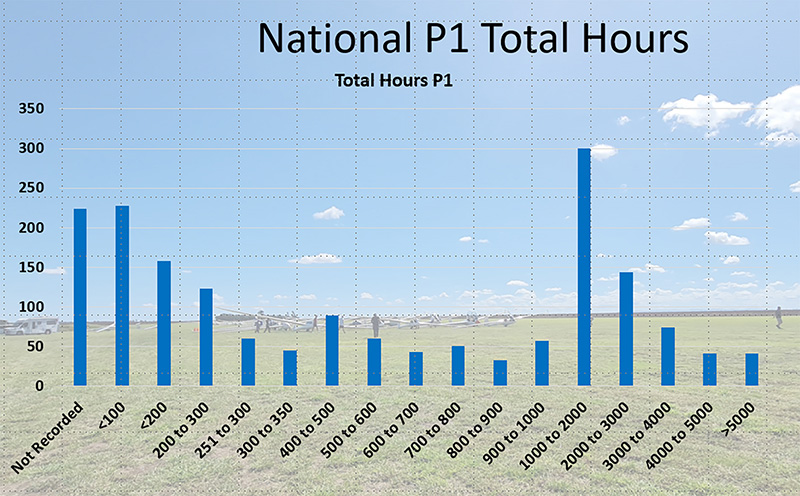
After 300 hours pilots are involved in less incident. Then around 1000 hours we see a spike. Possible complacency?
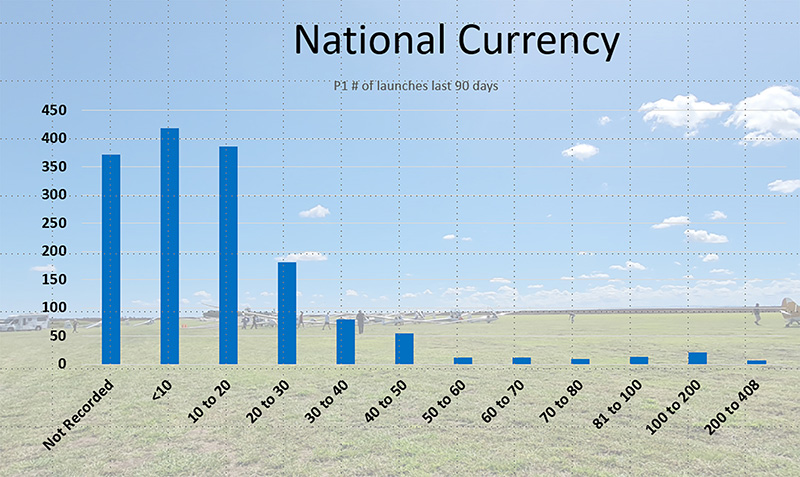
This shows that pilots who fly less often are involved in more incidents.
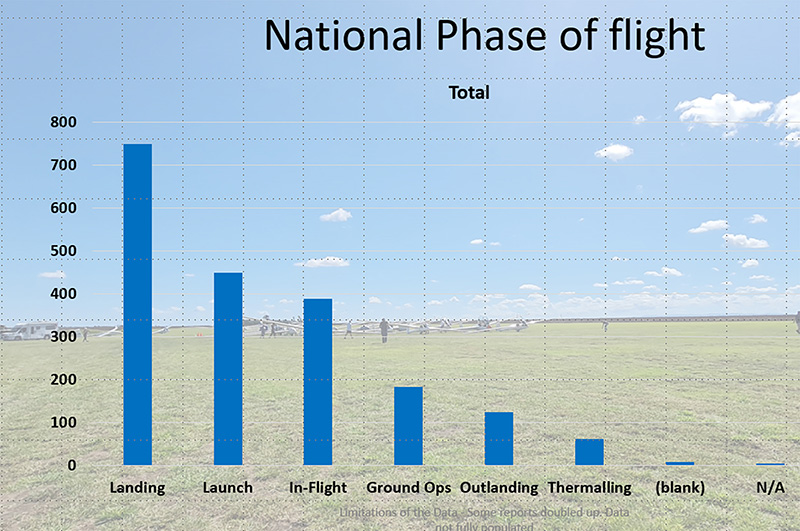
Not surprising that Landing and Launching are the top two. Since 2020 the overall pattern has not changed.
You will see focus on landings by your Instructors in training and flight reviews going forward.
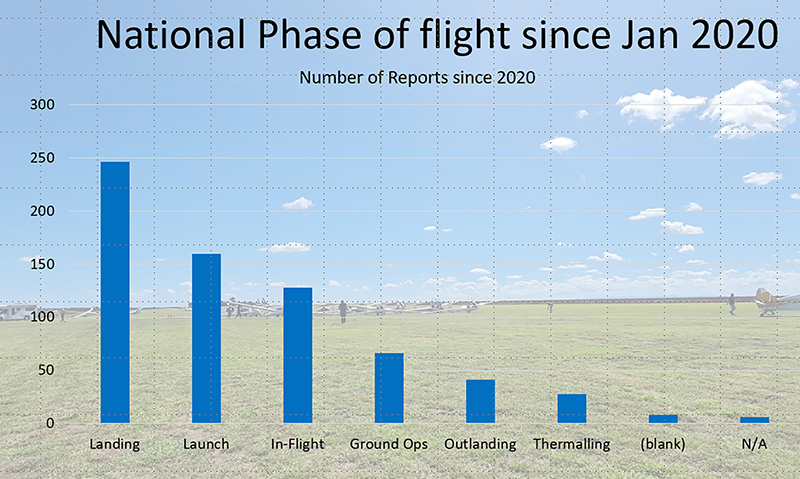
Dave Boulter
Executive Manager Operations































